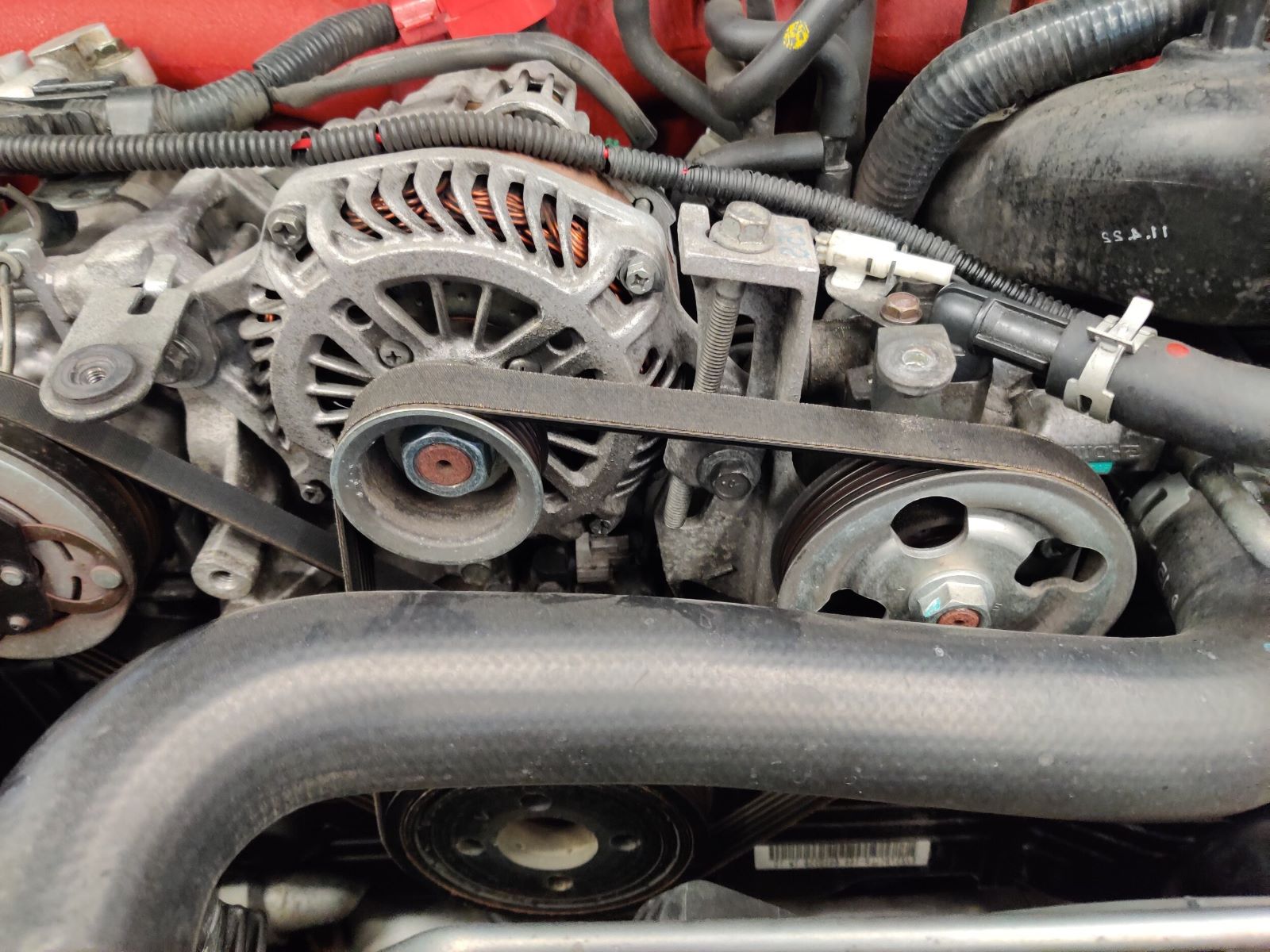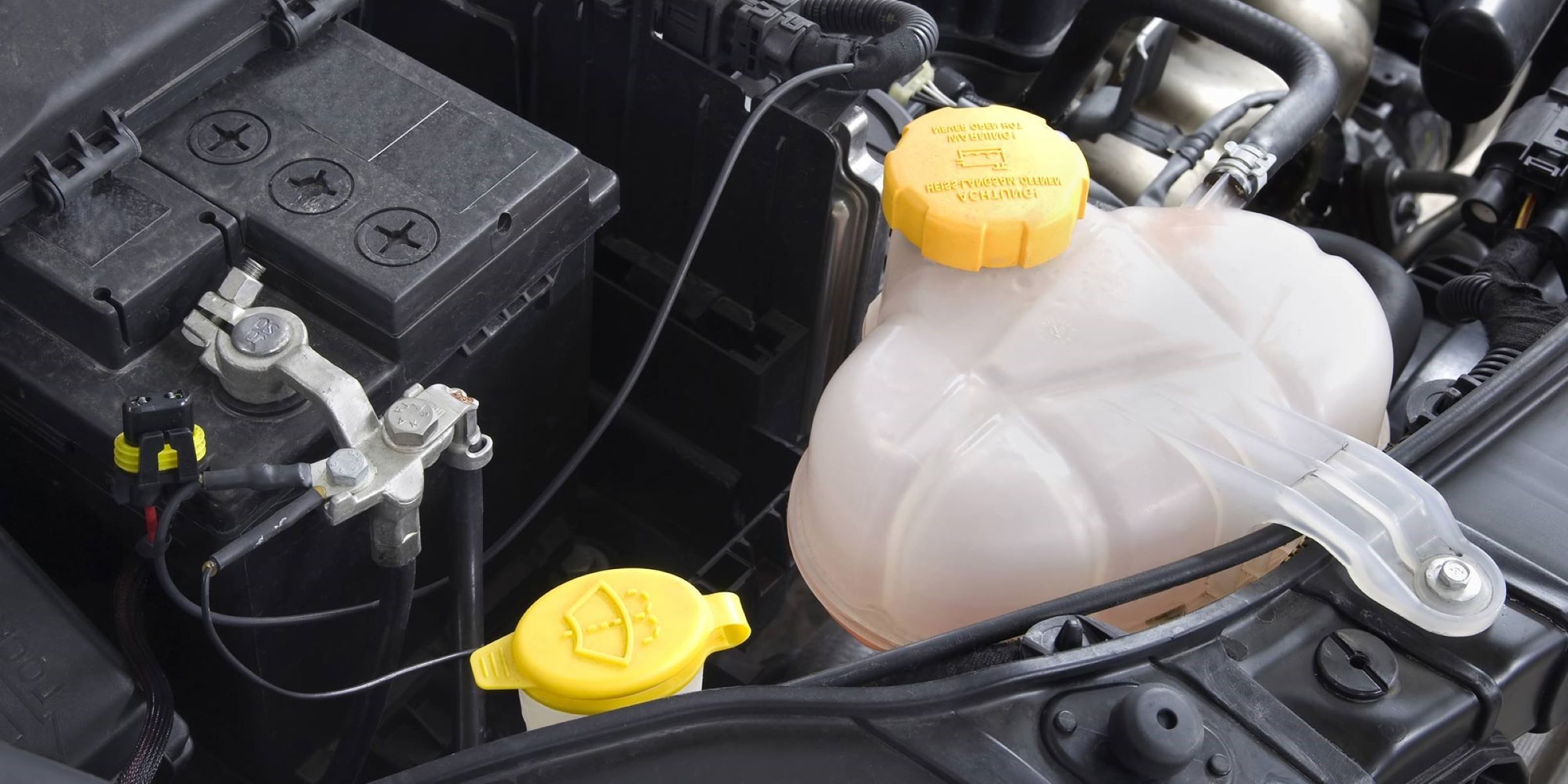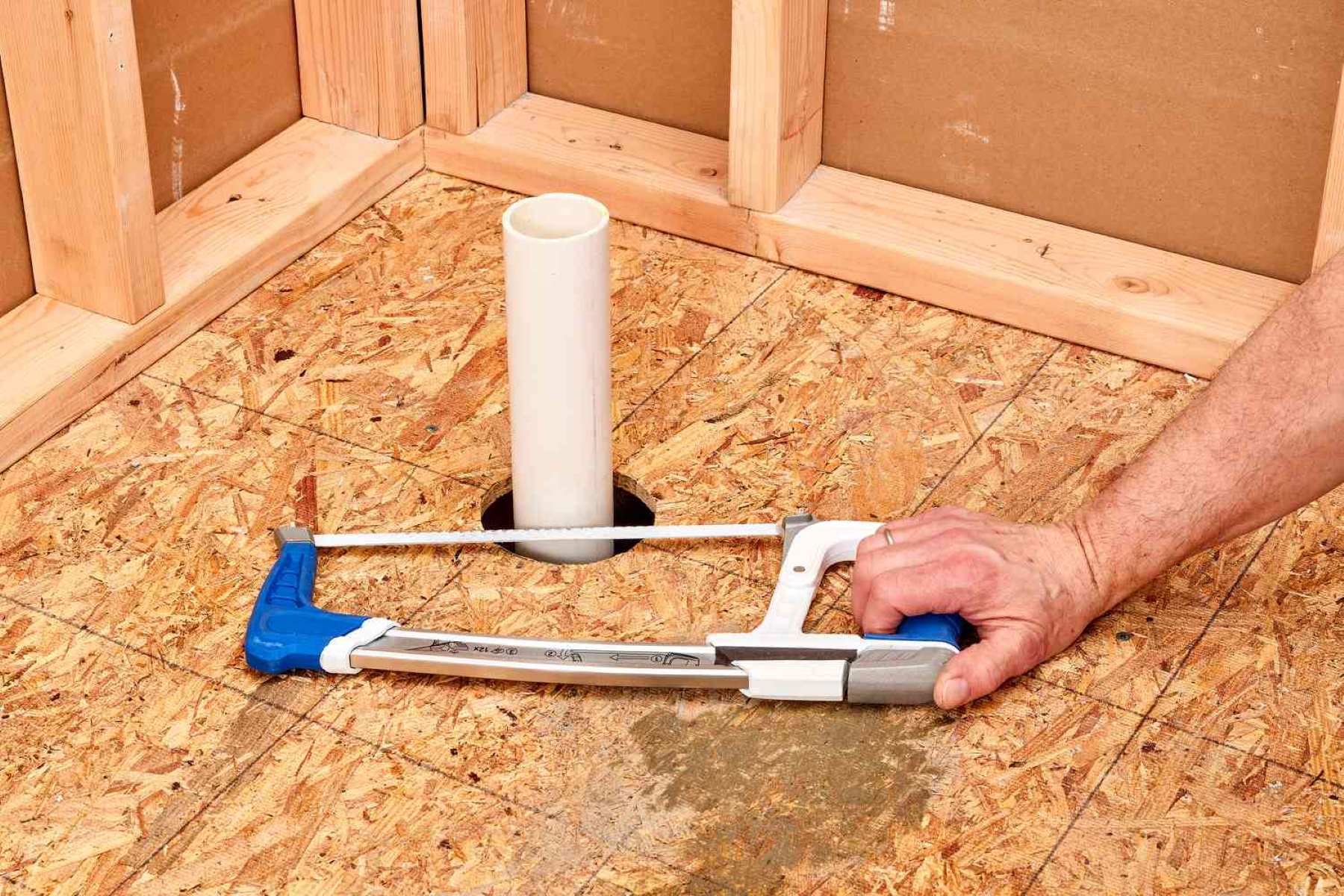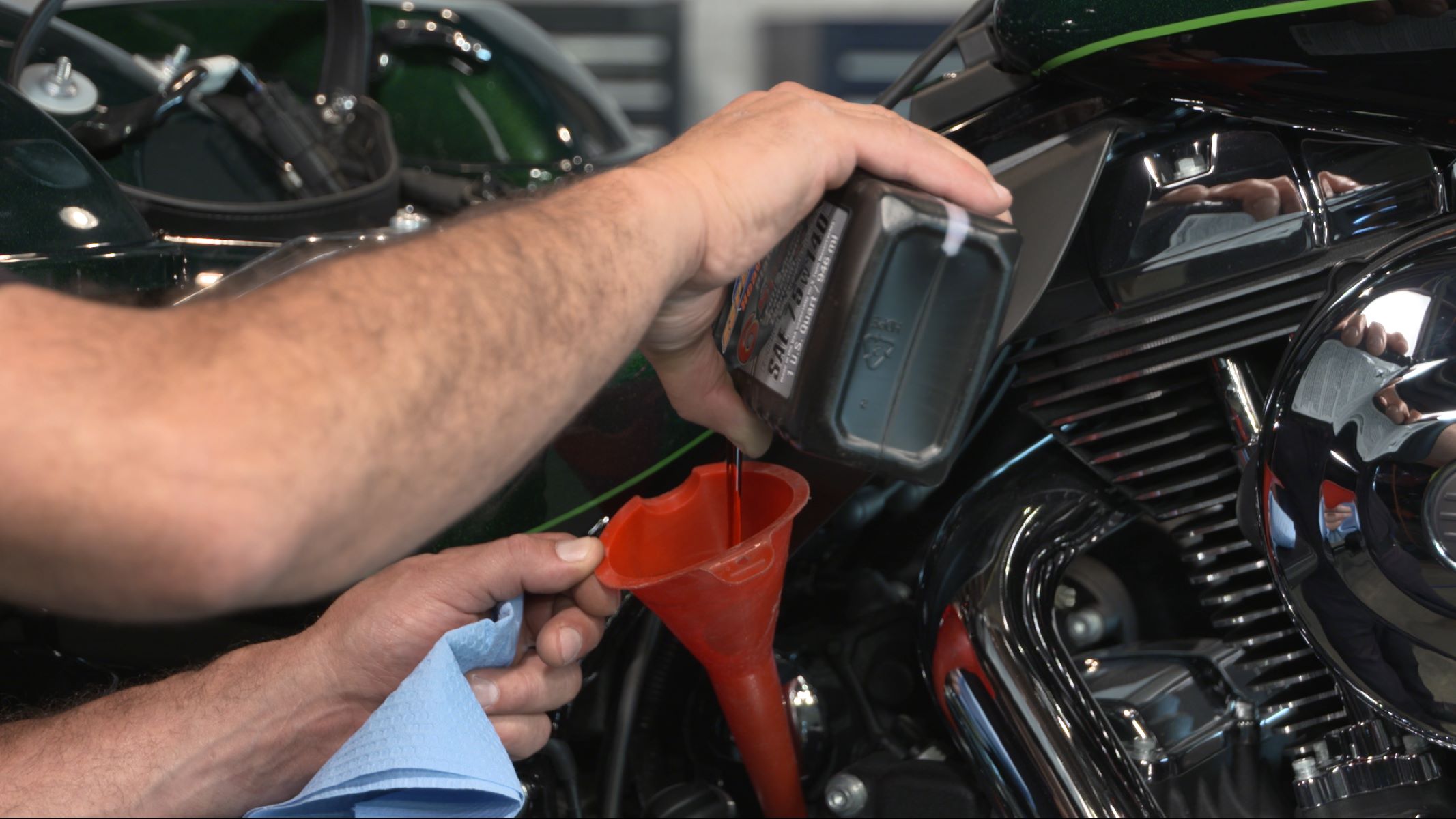Home>Automotive>Quick And Easy Ways To Temporarily Fix A Power Steering Leak


Automotive
Quick And Easy Ways To Temporarily Fix A Power Steering Leak
Published: January 14, 2024
Learn quick and easy automotive solutions for temporarily fixing a power steering leak. Get expert tips to address the issue efficiently.
(Many of the links in this article redirect to a specific reviewed product. Your purchase of these products through affiliate links helps to generate commission for Regretless.com, at no extra cost. Learn more)
Table of Contents
Introduction
Dealing with a power steering leak in your vehicle can be a frustrating and concerning issue. The power steering system plays a crucial role in ensuring smooth and effortless steering, and a leak can compromise its functionality, leading to difficulty in maneuvering the vehicle. However, there's no need to panic, as there are several quick and easy temporary fixes that can help address the problem until a more permanent solution can be implemented.
In this comprehensive guide, we will explore various methods to temporarily fix a power steering leak, providing you with the knowledge and confidence to tackle this issue effectively. From identifying the source of the leak to utilizing power steering stop leak additives and repair kits, we will cover a range of practical solutions that can help you regain control of your vehicle's steering performance.
Whether you're a seasoned car enthusiast or someone who is new to automotive maintenance, this article is designed to equip you with the essential information needed to address a power steering leak promptly and efficiently. By following the step-by-step instructions and tips outlined in the upcoming sections, you can take proactive measures to mitigate the impact of a power steering leak and ensure a safer and more enjoyable driving experience.
Read more: Quick And Easy Exhaust Manifold Leak Fix!
Identifying the Power Steering Leak
Identifying the source of a power steering leak is the crucial first step in addressing this issue. A power steering system typically consists of a pump, hoses, and a steering gear, and any of these components can be the potential point of leakage. Here are the key steps to identify the power steering leak:
-
Visual Inspection: Start by visually inspecting the power steering system. Look for any signs of fluid accumulation or wetness around the power steering pump, hoses, and connections. The power steering fluid is usually red or light brown in color, making it easier to distinguish from other automotive fluids.
-
Check the Power Steering Pump: The power steering pump is a common area for leaks. Inspect the pump for any visible signs of fluid seepage or dripping. Additionally, check the pump's reservoir and cap for any indications of fluid leaks.
-
Examine the Hoses: The power steering hoses are another potential source of leaks. Carefully inspect the hoses for cracks, bulges, or signs of wear and tear. Pay close attention to the connections where the hoses meet the pump and steering gear, as these areas are prone to leakage.
-
Inspect the Steering Gear: The steering gear, including the rack and pinion or steering box, can also develop leaks. Look for fluid accumulation around the gear housing and the area where the steering shaft connects to the gear.
-
Utilize a UV Dye: If the visual inspection doesn't reveal the source of the leak, consider using a UV dye additive. This special dye can be mixed with the power steering fluid and will fluoresce under UV light, making it easier to pinpoint the exact location of the leak.
By carefully examining these components and utilizing additional diagnostic tools if necessary, you can effectively identify the source of the power steering leak. Once the source has been determined, you can proceed with the appropriate temporary fix to address the issue and prevent further fluid loss.
This thorough process of identification is essential in ensuring that the subsequent steps taken to address the power steering leak are targeted and effective. Understanding the source of the leak empowers you to make informed decisions regarding the temporary fixes required to maintain the proper functioning of your vehicle's power steering system.
Using a Power Steering Stop Leak Additive
When faced with a power steering leak, utilizing a power steering stop leak additive can be an effective and convenient temporary solution. These specially formulated additives are designed to rejuvenate and recondition the rubber seals and gaskets within the power steering system, effectively sealing minor leaks and preventing further fluid loss. Here's a detailed look at the process of using a power steering stop leak additive:
-
Selecting the Right Additive: Before adding any stop leak product to your power steering system, it's essential to choose a high-quality additive that is compatible with your vehicle's power steering fluid and system components. Look for products that are specifically designed for power steering leaks and are safe to use with various types of power steering fluid.
-
Locating the Power Steering Reservoir: The power steering reservoir is typically located near the power steering pump and is easily accessible in most vehicles. It is essential to identify and access the reservoir to add the stop leak additive effectively.
-
Checking the Fluid Level: Before adding the stop leak additive, check the current level of power steering fluid in the reservoir. If the fluid level is significantly low due to the leak, it may be necessary to top up the fluid before adding the stop leak product.
-
Adding the Stop Leak Additive: With the engine turned off, carefully add the recommended amount of the stop leak additive to the power steering reservoir. Follow the manufacturer's instructions regarding the appropriate dosage based on your vehicle's power steering fluid capacity.
-
Running the Engine and Cycling the Steering: After adding the stop leak additive, start the engine and allow it to idle for a few minutes. While the engine is running, gently turn the steering wheel from lock to lock several times to ensure thorough circulation of the additive within the power steering system.
-
Monitoring for Improvement: As the vehicle operates, the stop leak additive will begin to circulate throughout the power steering system, targeting and sealing minor leaks. Monitor the power steering system for any noticeable reduction in fluid leakage over the following days, as the additive continues to take effect.
By following these steps and utilizing a power steering stop leak additive, you can effectively address minor power steering leaks and prevent further fluid loss. It's important to note that while stop leak additives can provide a temporary fix for minor leaks, they are not a substitute for proper repairs in the long term. Therefore, it is advisable to seek professional assistance to address any significant or persistent power steering leaks.
Adding Power Steering Fluid
Ensuring the power steering system is adequately filled with fluid is essential for maintaining its functionality, especially when dealing with a leak. Here's a detailed guide on how to add power steering fluid to your vehicle:
-
Locate the Power Steering Reservoir: The power steering fluid reservoir is typically a translucent container with a clearly marked "Max" and "Min" level. It is often located near the power steering pump and is easily accessible in most vehicles.
-
Check the Current Fluid Level: Before adding new fluid, it's crucial to check the existing level in the reservoir. If the fluid level is close to or below the "Min" mark, it indicates a significant loss of fluid due to the leak.
-
Selecting the Right Fluid: It is important to use the correct type of power steering fluid recommended for your vehicle. Consult your vehicle's owner's manual or the reservoir cap for the specific fluid type required. Using the wrong type of fluid can lead to potential damage to the power steering system.
-
Add the New Fluid: With the engine turned off, carefully remove the reservoir cap to access the opening. Slowly pour the appropriate type of power steering fluid into the reservoir, ensuring that it reaches the recommended level between the "Min" and "Max" marks.
-
Check for Leaks: After adding the new fluid, visually inspect the area around the power steering pump, hoses, and connections to ensure there are no immediate signs of leakage. This step helps in monitoring the effectiveness of the temporary fluid replenishment.
-
Start the Engine and Check the Fluid Level: Start the engine and let it idle for a few moments. Then, turn the steering wheel from lock to lock a few times to allow the new fluid to circulate through the system. Once the engine is turned off, recheck the fluid level to ensure it remains within the recommended range.
By following these steps and adding the appropriate power steering fluid, you can temporarily replenish the fluid lost due to the leak, helping to maintain the operational integrity of the power steering system. It's important to keep in mind that adding power steering fluid serves as a temporary measure to address the effects of a leak, and it is crucial to identify and address the root cause of the leak for a more permanent solution.
Remember, while these temporary fixes can help mitigate the immediate impact of a power steering leak, seeking professional assistance for a comprehensive inspection and repair is advisable to ensure the long-term reliability and safety of your vehicle's power steering system.
Using a Power Steering Leak Repair Kit
When faced with a power steering leak, utilizing a power steering leak repair kit can provide a more comprehensive and lasting temporary solution. These repair kits are designed to seal leaks in the power steering system, addressing the underlying issue and preventing further fluid loss. Here's a detailed guide on how to use a power steering leak repair kit effectively:
-
Selecting the Right Repair Kit: Before proceeding with the repair, it's essential to choose a high-quality power steering leak repair kit that is compatible with your vehicle's power steering system. Look for kits that include the necessary components to address common power steering leaks, such as sealants, O-rings, and gaskets.
-
Identifying the Source of the Leak: As mentioned earlier, it's crucial to identify the specific component or area of the power steering system that is leaking. Whether it's the pump, hoses, or steering gear, pinpointing the source of the leak will guide you in using the repair kit effectively.
-
Preparing the Power Steering System: Prior to using the repair kit, ensure that the power steering system is clean and free from excessive fluid accumulation. Thoroughly clean the areas around the leak to provide a suitable surface for the repair materials to adhere to.
-
Following the Kit Instructions: Each power steering leak repair kit comes with specific instructions for application. It's imperative to carefully follow the provided guidelines, including the preparation of sealants and the application process. Pay close attention to any recommended curing times for the sealants to ensure effective sealing of the leak.
-
Applying the Sealants and Components: Depending on the nature of the leak and the contents of the repair kit, apply the sealants, O-rings, or gaskets to the identified areas of the power steering system. Ensure that the components are installed securely and according to the kit's instructions to achieve a reliable seal.
-
Testing for Effectiveness: After applying the repair materials, start the engine and operate the vehicle to test the effectiveness of the repair. Monitor the power steering system for any signs of continued leakage and observe the steering performance to ensure that the temporary repair has effectively addressed the leak.
By following these steps and using a power steering leak repair kit, you can take proactive measures to seal power steering leaks and prevent further fluid loss. However, it's important to note that while these repair kits can provide a temporary fix for certain types of leaks, seeking professional assistance for a comprehensive inspection and permanent repair is advisable to ensure the long-term reliability of your vehicle's power steering system.
Tightening or Replacing Hose Clamps
One common source of power steering leaks is the hose connections, where the clamps may become loose or damaged over time. Addressing these issues by tightening or replacing the hose clamps can serve as a straightforward and effective temporary solution to mitigate power steering fluid leakage. Here's a detailed guide on how to tighten or replace hose clamps to address power steering leaks:
1. Identifying the Problematic Clamps
Begin by visually inspecting the power steering hoses and their respective clamps. Look for any signs of looseness, corrosion, or damage to the clamps. It's essential to identify the specific clamps that are contributing to the power steering leak.
2. Gathering the Necessary Tools
Before proceeding with tightening or replacing the hose clamps, gather the appropriate tools, including a screwdriver or a socket wrench, and replacement clamps if needed. Having the right tools on hand will streamline the process and ensure that the clamps are secured effectively.
3. Tightening the Existing Clamps
If the hose clamps are found to be loose but are still in good condition, use a screwdriver or a socket wrench to tighten them. Carefully apply the necessary force to secure the clamps around the hose connections, ensuring that they are snug and free from any play. This step can effectively stop minor leaks caused by loose clamps.
4. Inspecting for Damage
In cases where the hose clamps show signs of corrosion, deformation, or irreversible damage, it may be necessary to replace them. Damaged clamps are unable to provide a reliable seal, making it crucial to identify and address any compromised clamps contributing to the power steering leak.
5. Replacing the Clamps
If replacement is necessary, carefully remove the damaged clamps using the appropriate tools. Then, select suitable replacement clamps that match the size and specifications of the original clamps. Install the new clamps securely around the hose connections, ensuring that they are tightened sufficiently to form a reliable seal.
6. Testing for Leakage
After tightening or replacing the hose clamps, start the engine and observe the power steering system for any signs of continued leakage. Turn the steering wheel to different positions to put the system under varying pressure. Monitoring for any fluid seepage will help confirm the effectiveness of the clamp tightening or replacement in addressing the power steering leak.
By following these steps and addressing loose or damaged hose clamps, you can effectively mitigate power steering fluid leaks and restore the integrity of the system. However, it's important to note that while tightening or replacing hose clamps can provide a temporary fix for certain types of leaks, seeking professional assistance for a comprehensive inspection and permanent repair is advisable to ensure the long-term reliability of your vehicle's power steering system.
Conclusion
In conclusion, addressing a power steering leak through quick and easy temporary fixes is not only feasible but also essential for maintaining the operational integrity of your vehicle's power steering system. By following the comprehensive methods outlined in this guide, you can effectively tackle power steering leaks and mitigate their impact until a more permanent solution is implemented.
Identifying the source of the power steering leak is the crucial first step in this process. Through visual inspection, checking the power steering pump, examining the hoses, and utilizing diagnostic tools such as UV dye, you can pinpoint the exact location of the leak, providing a targeted approach to the subsequent temporary fixes.
Utilizing a power steering stop leak additive can effectively rejuvenate and recondition the rubber seals and gaskets within the power steering system, sealing minor leaks and preventing further fluid loss. This convenient solution provides a quick and efficient way to address the immediate effects of a power steering leak.
In addition, replenishing the power steering fluid and using a power steering leak repair kit can provide more comprehensive and lasting temporary fixes. Adding the appropriate power steering fluid ensures that the system remains adequately filled, while using a power steering leak repair kit allows you to seal leaks and prevent further fluid loss effectively.
Furthermore, addressing loose or damaged hose clamps serves as a straightforward and practical temporary solution to mitigate power steering fluid leakage. By tightening or replacing the clamps, you can restore the integrity of the hose connections and prevent fluid seepage, contributing to the overall effectiveness of the temporary fixes.
It is important to note that while these temporary fixes can effectively address certain types of power steering leaks, seeking professional assistance for a comprehensive inspection and permanent repair is advisable to ensure the long-term reliability and safety of your vehicle's power steering system.
In essence, by proactively addressing power steering leaks through these quick and easy temporary fixes, you can maintain the proper functioning of your vehicle's power steering system and ensure a smoother and more secure driving experience. Remember, staying vigilant and taking prompt action when dealing with power steering leaks can help preserve the performance and longevity of your vehicle.













